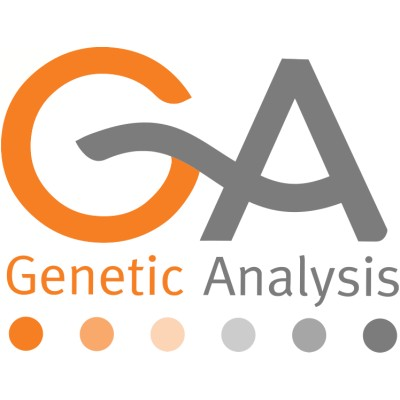Genetic Analysis AS: Navigating Challenges and Opportunities in the Microbiome Market
May 28, 2025, 10:28 am
In the world of biotechnology, few companies have captured the imagination quite like Genetic Analysis AS (GA). This Oslo-based firm is at the forefront of microbiome diagnostics, a field that promises to revolutionize healthcare. As the company releases its Q1 2025 report, it faces a landscape marked by both challenges and opportunities.
The first quarter of 2025 was a mixed bag for GA. Operating income reached NOK 4.0 million, a slight dip from NOK 4.8 million in the same period last year. Sales fell to NOK 2.4 million, down 27% from NOK 3.3 million in Q1 2024. The decline was largely attributed to inventory adjustments by partners. However, the silver lining was a strong gross margin of 84%, up from 77% a year earlier. This improvement stemmed from a better product mix and cost-saving measures.
Despite the dip in sales, GA's EBITDA showed signs of recovery, improving to NOK -3.5 million from NOK -4.5 million in Q1 2024. The net loss also narrowed to NOK -4.6 million, down from NOK -5.8 million. This trend indicates that while revenue may be down, the company is tightening its belt and improving operational efficiency.
GA's strategic partnerships are a cornerstone of its growth strategy. The collaboration with Diasorin has expanded the distribution of the GA-map® Dysbiosis Test in the DACH region and Poland, now extending to select Baltic countries. This expansion is crucial as it taps into new markets and diversifies revenue streams. The company is also on track to launch a new product, the GA-map® MHI marker, in collaboration with Ferring Pharmaceutical, expected in Q2 2025 in the U.S. market.
In April 2025, GA made a significant leap into the Chinese market by launching the GA-map® Dysbiosis Test in the consumer health sector. This move not only broadens GA's geographical footprint but also positions it in a high-growth market. The test has been tailored to meet local demands, showcasing GA's adaptability and commitment to customer-centric solutions.
Financially, GA is taking steps to bolster its capital base. A directed share issue of NOK 12.8 million was announced, primarily involving existing shareholders. This capital injection is vital for continuing collaborations and pursuing new microbiome-related projects. The subsequent offering, allowing shareholders to subscribe for additional shares, aims to raise NOK 7.1 million, further strengthening the company's financial foundation.
The board of directors has also seen changes, with Morten Jurs appointed as Chairman and Ove Öhman joining as a new board member. Their experience in the life sciences sector is expected to guide GA through its next growth phase. Jurs brings a wealth of knowledge from his previous roles, including a significant sale to bioMérieux, while Öhman’s entrepreneurial background adds depth to the board.
However, the road ahead is not without hurdles. The decline in sales raises questions about market demand and competition. The microbiome diagnostics field is rapidly evolving, with new players entering the arena. GA must continue to innovate and differentiate its offerings to maintain its competitive edge.
The company’s vision is ambitious: to become the leading provider of standardized gut microbiota testing worldwide. This goal is not just a lofty statement; it reflects a commitment to advancing healthcare through science. The GA-map® platform, with its unique multiplex targets approach, is designed for simultaneous analysis of numerous bacteria, providing immediate results. This capability is a game-changer in diagnostics, allowing for quicker and more accurate assessments.
As GA navigates the complexities of the microbiome market, it must remain agile. The company’s ability to adapt to changing market conditions will be crucial. Cost management and operational efficiency will play significant roles in sustaining growth. The recent improvements in EBITDA and net loss indicate that GA is on the right track, but vigilance is essential.
In conclusion, Genetic Analysis AS stands at a crossroads. The company has made significant strides in expanding its market presence and improving financial metrics. Yet, challenges loom on the horizon. The key to success will lie in leveraging partnerships, continuing innovation, and maintaining a sharp focus on operational efficiency. As the microbiome field continues to grow, GA has the potential to be a leader, provided it can navigate the turbulent waters ahead. The future is bright, but it requires careful steering.
The first quarter of 2025 was a mixed bag for GA. Operating income reached NOK 4.0 million, a slight dip from NOK 4.8 million in the same period last year. Sales fell to NOK 2.4 million, down 27% from NOK 3.3 million in Q1 2024. The decline was largely attributed to inventory adjustments by partners. However, the silver lining was a strong gross margin of 84%, up from 77% a year earlier. This improvement stemmed from a better product mix and cost-saving measures.
Despite the dip in sales, GA's EBITDA showed signs of recovery, improving to NOK -3.5 million from NOK -4.5 million in Q1 2024. The net loss also narrowed to NOK -4.6 million, down from NOK -5.8 million. This trend indicates that while revenue may be down, the company is tightening its belt and improving operational efficiency.
GA's strategic partnerships are a cornerstone of its growth strategy. The collaboration with Diasorin has expanded the distribution of the GA-map® Dysbiosis Test in the DACH region and Poland, now extending to select Baltic countries. This expansion is crucial as it taps into new markets and diversifies revenue streams. The company is also on track to launch a new product, the GA-map® MHI marker, in collaboration with Ferring Pharmaceutical, expected in Q2 2025 in the U.S. market.
In April 2025, GA made a significant leap into the Chinese market by launching the GA-map® Dysbiosis Test in the consumer health sector. This move not only broadens GA's geographical footprint but also positions it in a high-growth market. The test has been tailored to meet local demands, showcasing GA's adaptability and commitment to customer-centric solutions.
Financially, GA is taking steps to bolster its capital base. A directed share issue of NOK 12.8 million was announced, primarily involving existing shareholders. This capital injection is vital for continuing collaborations and pursuing new microbiome-related projects. The subsequent offering, allowing shareholders to subscribe for additional shares, aims to raise NOK 7.1 million, further strengthening the company's financial foundation.
The board of directors has also seen changes, with Morten Jurs appointed as Chairman and Ove Öhman joining as a new board member. Their experience in the life sciences sector is expected to guide GA through its next growth phase. Jurs brings a wealth of knowledge from his previous roles, including a significant sale to bioMérieux, while Öhman’s entrepreneurial background adds depth to the board.
However, the road ahead is not without hurdles. The decline in sales raises questions about market demand and competition. The microbiome diagnostics field is rapidly evolving, with new players entering the arena. GA must continue to innovate and differentiate its offerings to maintain its competitive edge.
The company’s vision is ambitious: to become the leading provider of standardized gut microbiota testing worldwide. This goal is not just a lofty statement; it reflects a commitment to advancing healthcare through science. The GA-map® platform, with its unique multiplex targets approach, is designed for simultaneous analysis of numerous bacteria, providing immediate results. This capability is a game-changer in diagnostics, allowing for quicker and more accurate assessments.
As GA navigates the complexities of the microbiome market, it must remain agile. The company’s ability to adapt to changing market conditions will be crucial. Cost management and operational efficiency will play significant roles in sustaining growth. The recent improvements in EBITDA and net loss indicate that GA is on the right track, but vigilance is essential.
In conclusion, Genetic Analysis AS stands at a crossroads. The company has made significant strides in expanding its market presence and improving financial metrics. Yet, challenges loom on the horizon. The key to success will lie in leveraging partnerships, continuing innovation, and maintaining a sharp focus on operational efficiency. As the microbiome field continues to grow, GA has the potential to be a leader, provided it can navigate the turbulent waters ahead. The future is bright, but it requires careful steering.

